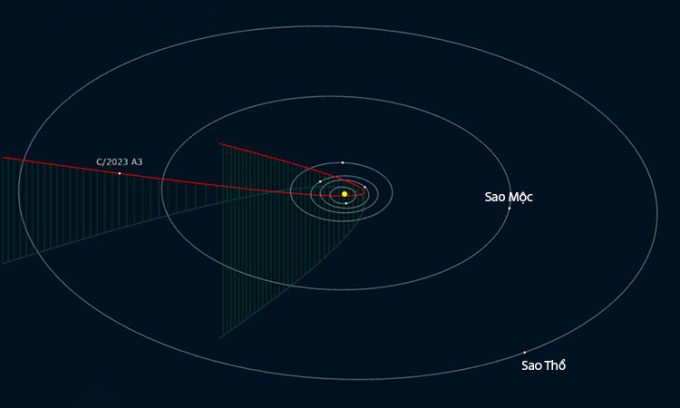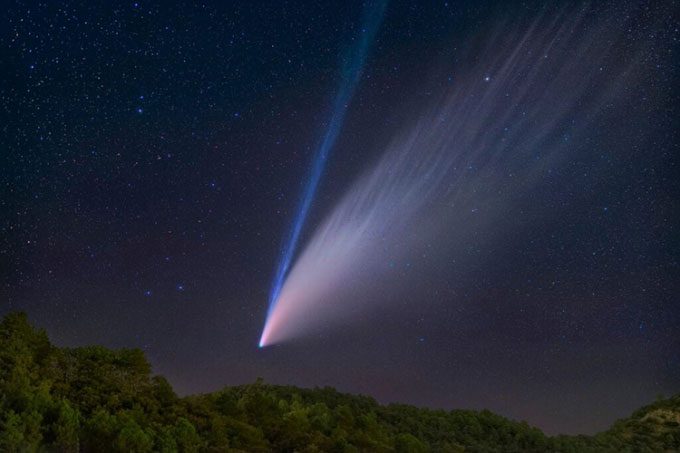A large comet with an orbital cycle of up to 30,000 years is heading towards the Sun and is expected to reach its closest point, known as perihelion, in September 2024.
The object was first observed on January 9, 2023, by the Purple Mountain Observatory of the Chinese Academy of Sciences, but it wasn’t until March 1, 2023, that the Minor Planet Center (MPC) of the International Astronomical Union confirmed it as a comet and named it C/2023 A3 (Tsuchinshan-ATLAS).
Currently, C/2023 A3 is about 7.3 AU (1.09 billion km) from the Sun, which is farther than the distance to Jupiter. However, it is moving towards the Sun, and its brightness is expected to increase rapidly. According to the Purple Mountain Observatory, the comet will reach perihelion on September 28, 2024. At that time, it will be approximately 0.39 AU (58 million km) from the Sun and may be visible to the naked eye.

Simulation of the current position and trajectory of comet C/2023 A3. (Image: Astro Vanbuitenen)
Although there is still a year and a half until the “visit” of C/2023 A3, many astronomers believe that it could offer a spectacular light display. This prediction is based on the following grounds:
- First, C/2023 A3 has a very long cycle. It comes from the distant regions of the solar system, with its last perihelion occurring about 30,000 years ago. This means the comet must contain a significant amount of material.
- Second, all available data suggests that C/2023 A3 is a large object. While the exact diameter of its nucleus is still unknown, the apparent magnitude of C/2023 A3 indicates it is quite large.
- Third, many long-period comets tend to break apart as they approach perihelion. However, C/2023 A3 will fly past the Sun at a relatively safe distance and has a high chance of surviving its approach.

Comet NEOWISE. (Image: Juan Carlos Casado).
According to the MPC, the maximum brightness of C/2023 A3 in the sky could reach 0 magnitude, meaning it will be six times brighter than the famous NEOWISE comet, which was observed in the summer of 2020, and 100 times brighter than the recent ZTF comet. The best place to observe C/2023 A3 will be in the Northern Hemisphere.
Of course, we are only discussing preliminary estimates. In the history of astronomy, there have been many instances where the brightness of comets exceeded expectations or disappointed upon their visit. Regardless, C/2023 A3 is sure to draw attention and feature prominently in news reports in the near future.


















































